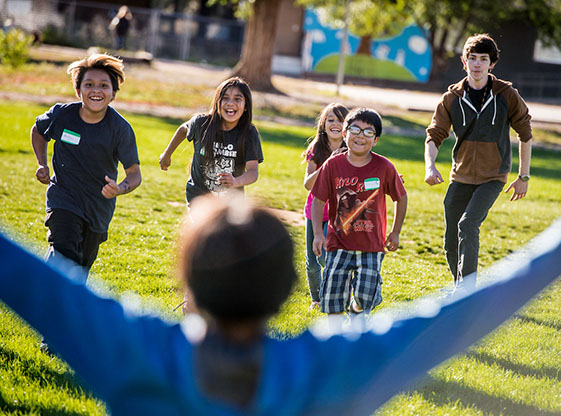By Kerry Bennett
Office of the Vice President for Research
The goal of public health is to improve the health of communities by promoting behaviors such as physical activity, while the goal of K-12 physical education (PE) is to teach children the skills to become and remain physically active for life.
Although their goals are related, there is an ongoing debate about how PE can prepare children to remain active beyond the school day—ultimately, teaching them to be physically literate so they will remain active throughout their lives. Physical literacy, according to the Society of Health and Physical Educators (SHAPE), is “the ability to move with competence and confidence in a wide variety of physical activities in multiple environments that benefit the healthy development of the whole person.”
Steve Palmer, associate dean of Northern Arizona University’s College of Health and Human Services, and Tim Behrens, professor of public health and chair of NAU’s Department of Health Sciences, recently published a paper addressing this debate and supporting a new direction for physical education. In their article “At the Crossroads: How Physical Education Can Succeed in a Public Health Paradigm,” the researchers argue that physical education should “teach youth the skills, knowledge and dispositions to become physically literate and active for life.”
“There is a popular trend for PE in the schools to be viewed as the place where kids become active, but it’s only a place to be active,” Palmer said. “Our viewpoint is that PE should be the vehicle to teach children how to be active so physical activity can lead to better health.”
“A lot of people think that we’ll be able to make our kids healthier by making them more physically active,” Behrens said. “In reality, there are a lot of kids, especially those from underprivileged households, who don’t have the skills or the confidence to engage in activity on their own outside of school. And we know from longitudinal studies that if people aren’t active as kids, they won’t be active in adulthood.”
The traditional model of PE has focused on training kids to be athletes.
“Unfortunately, that model frequently fails because most kids are not athletes, and when we expect them to be athletes, we’re just reinforcing the fact that they’re not athletes—which will mean they never do that activity again,” Palmer said.
The researchers recommend physical educators embrace a more comprehensive school physical activity program model, tailor instruction to better fit children’s capabilities and help them build confidence in themselves.
“If we can create the skill set and the desire in kids, they are much more likely to continue being physically active, which sets them up for healthier, more active lives,” Behrens said.
Palmer and Behrens are working with the nonprofit Arizona Association of Health and Physical Education to share their recommendations and are conducting research to explore measurable contributions physical education can make toward out-of-school physical activity.



